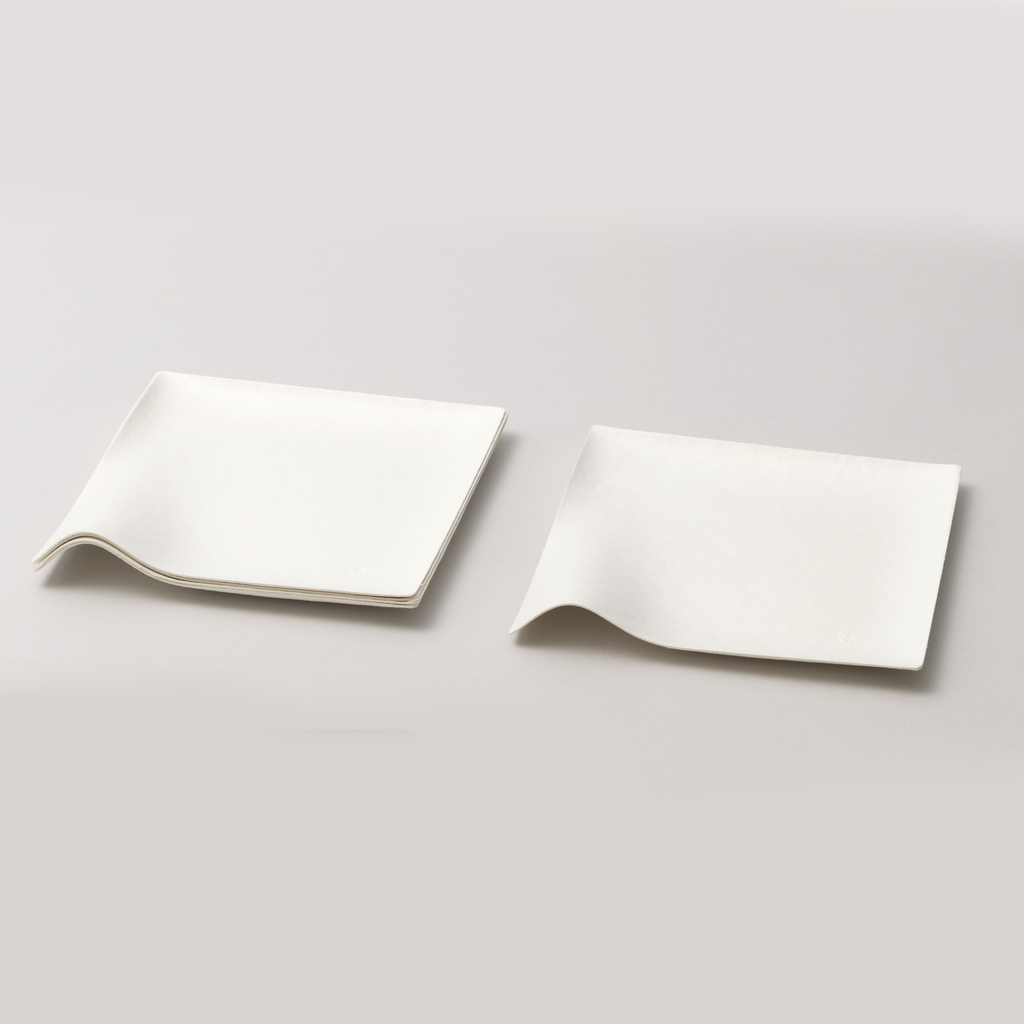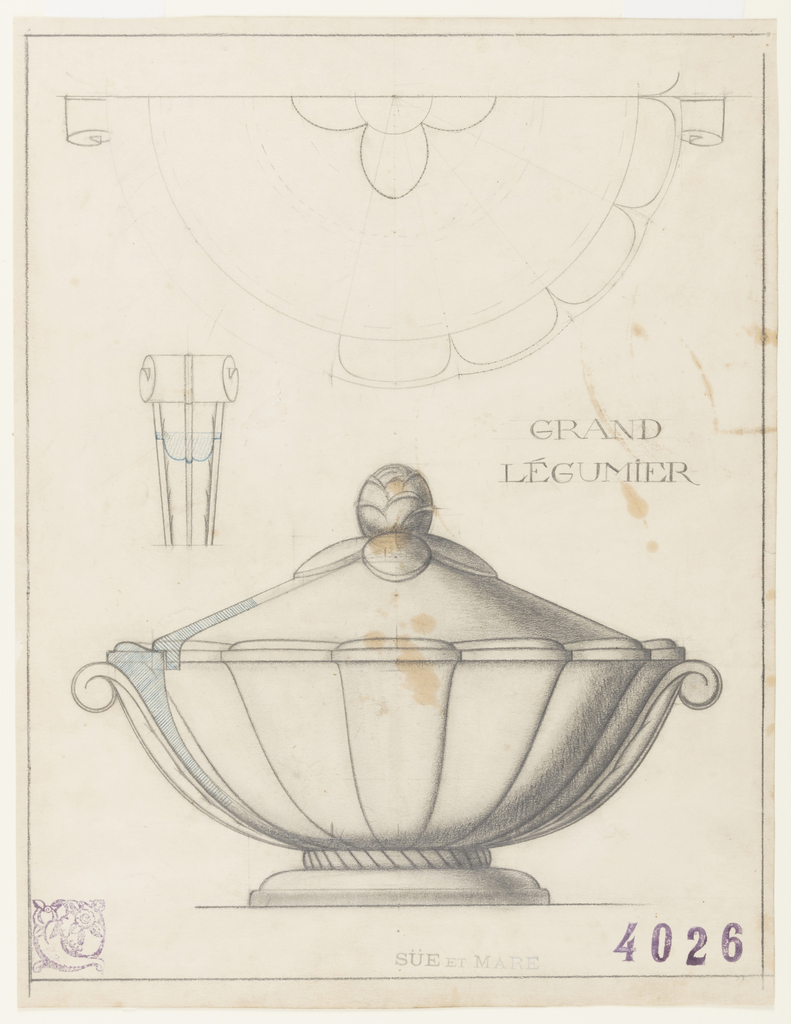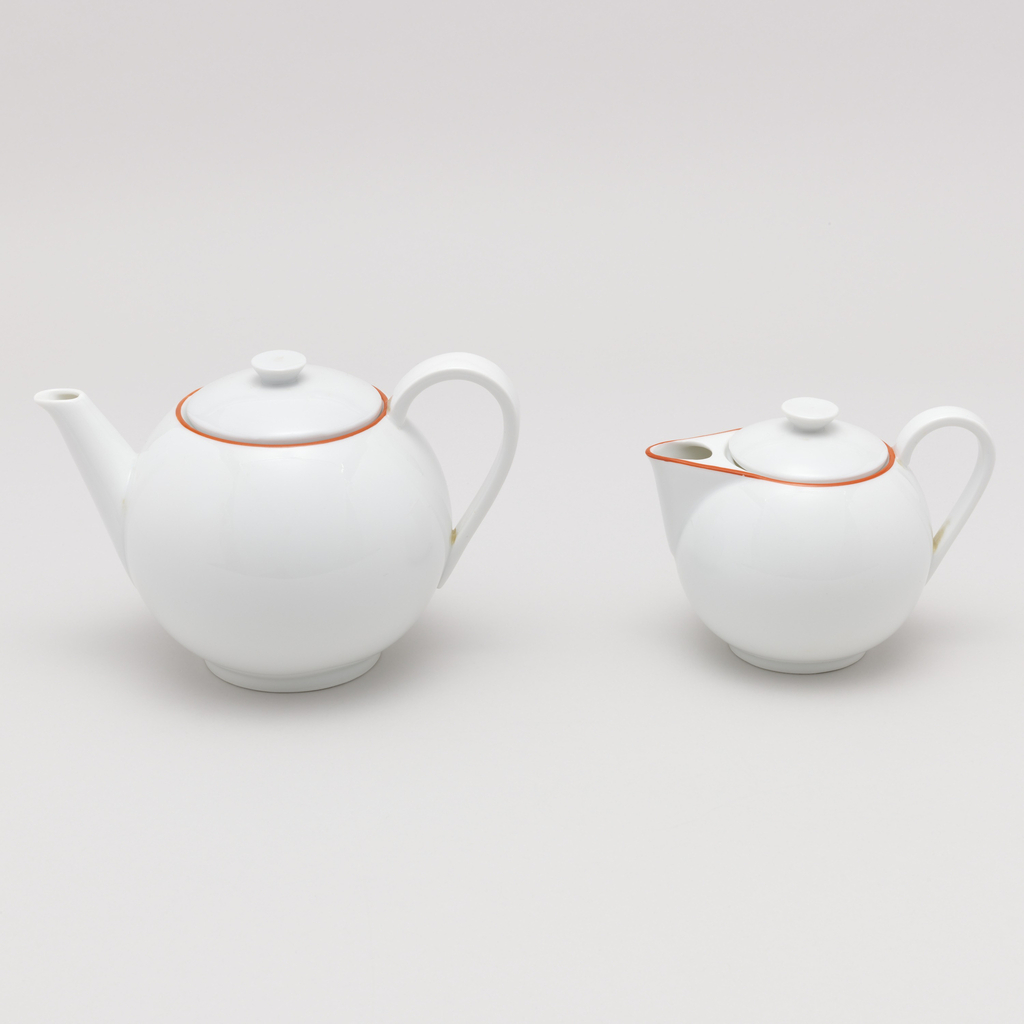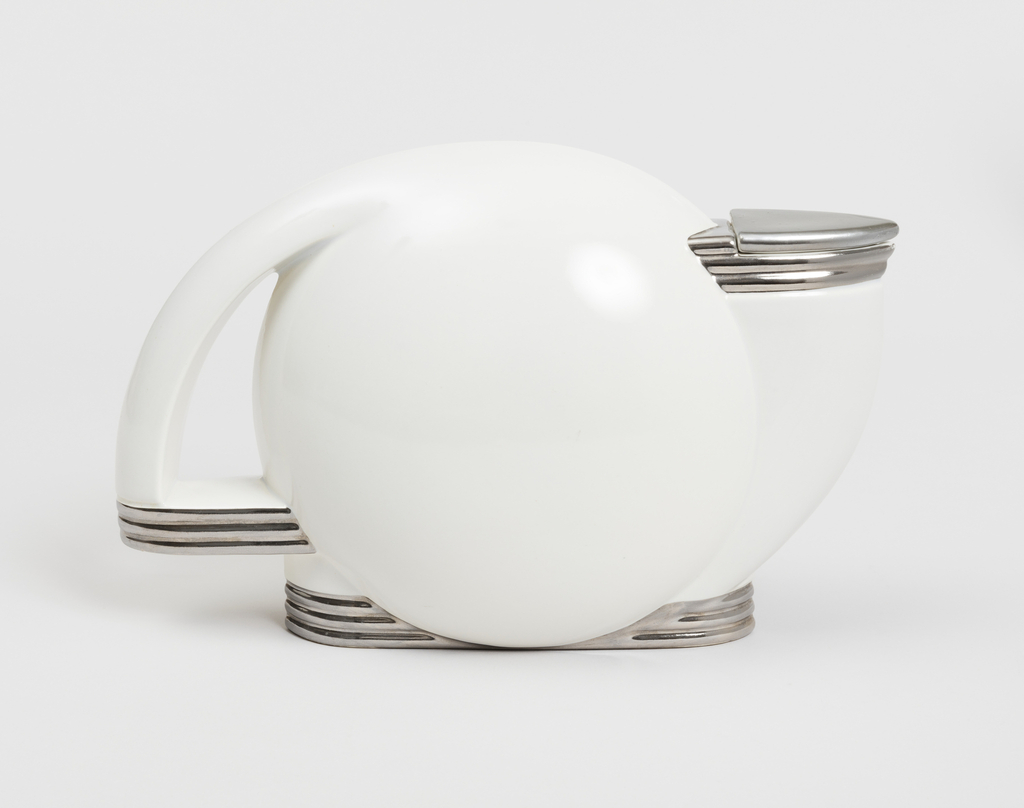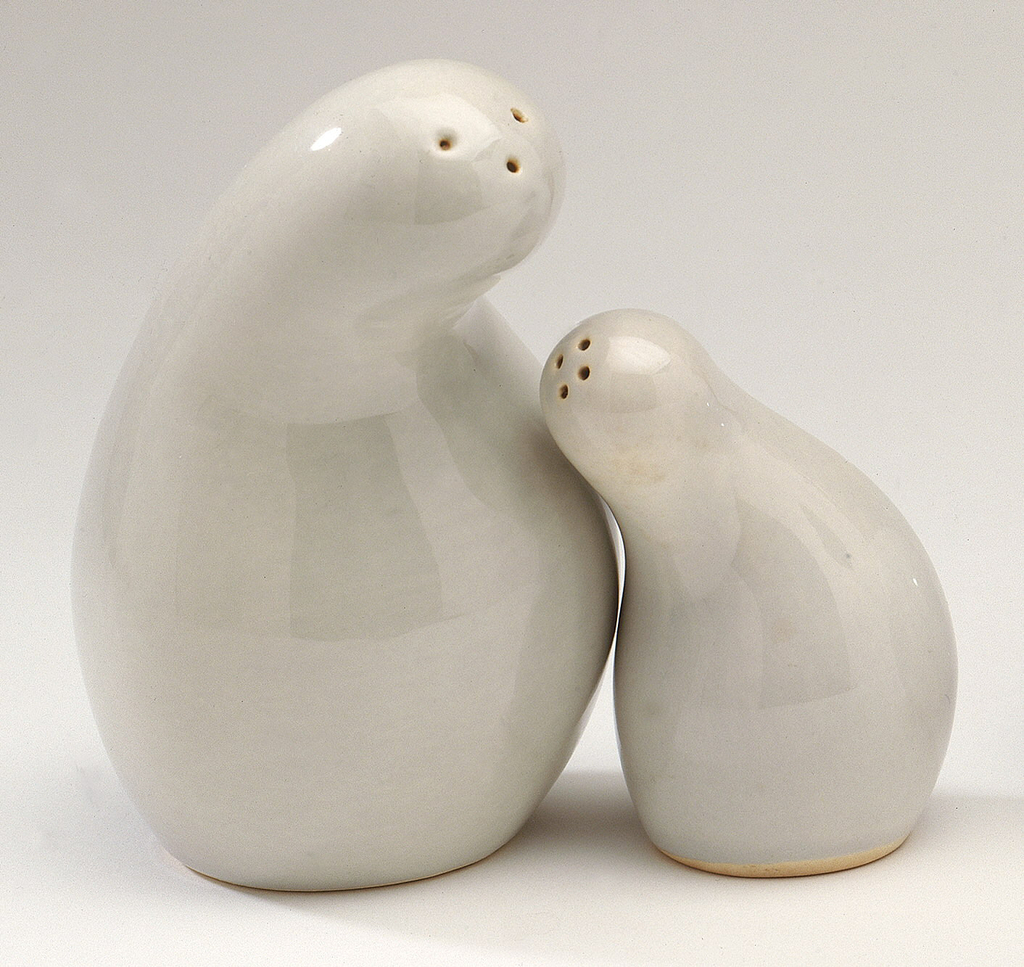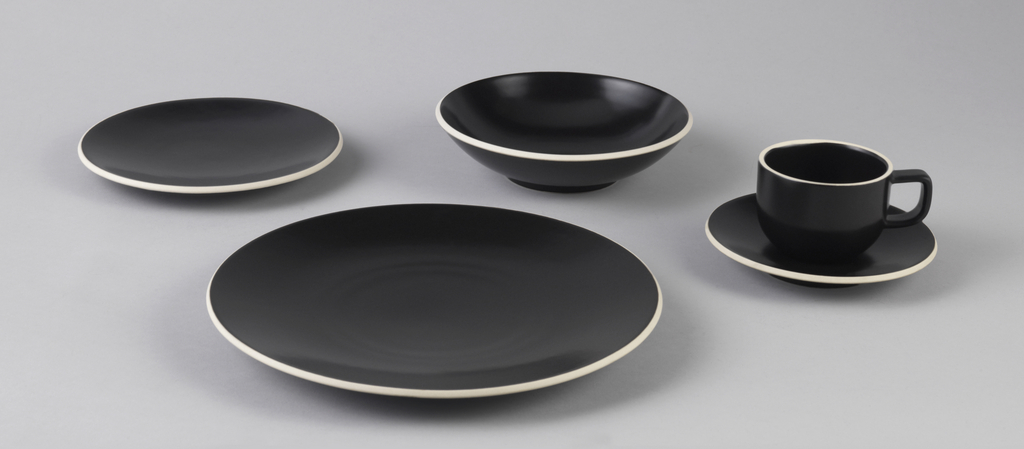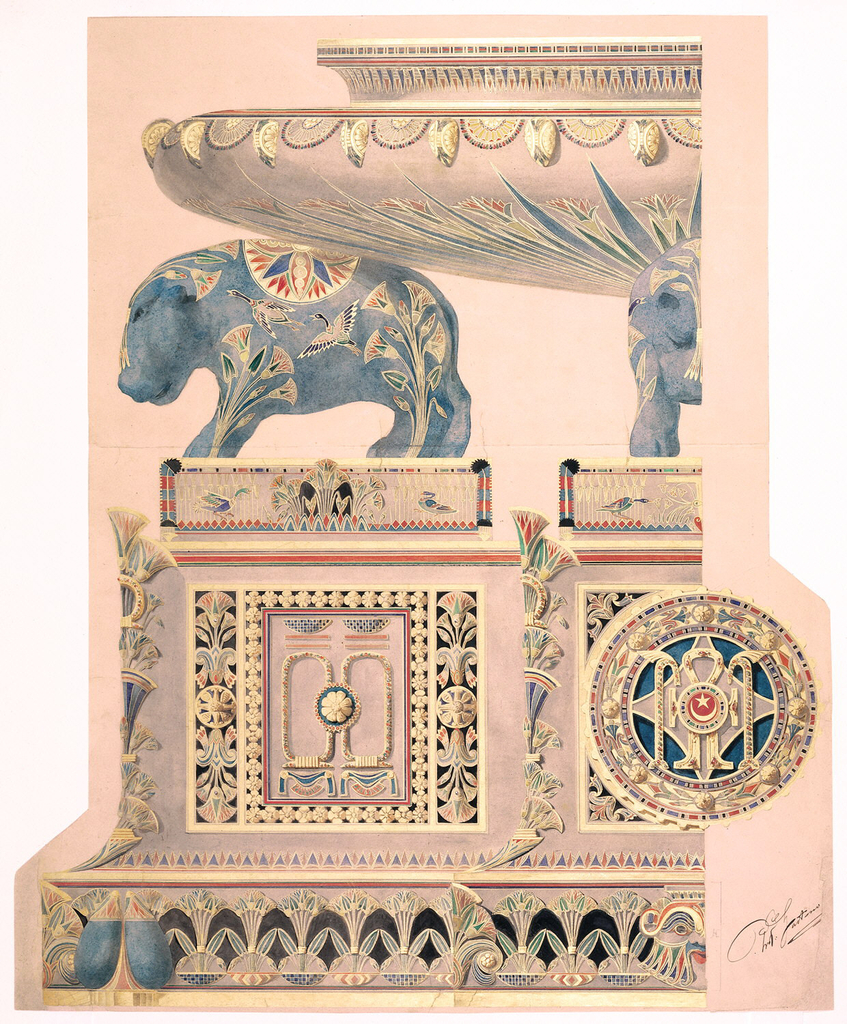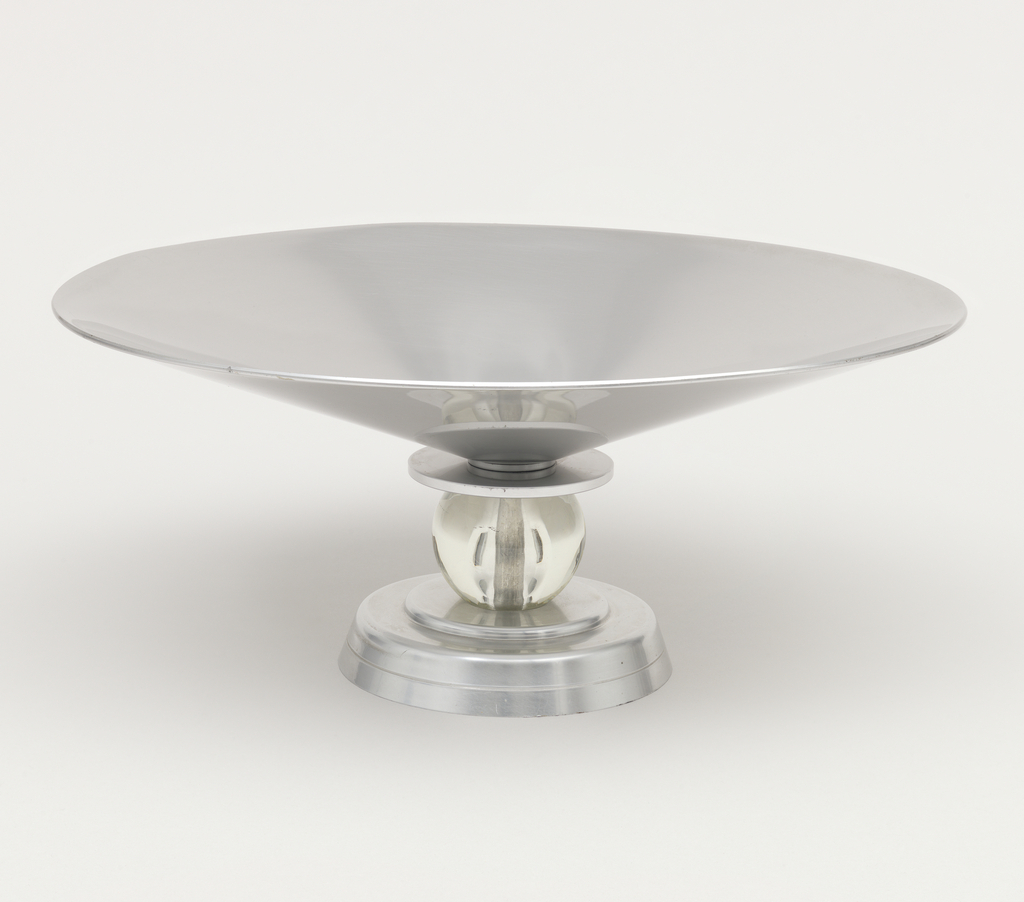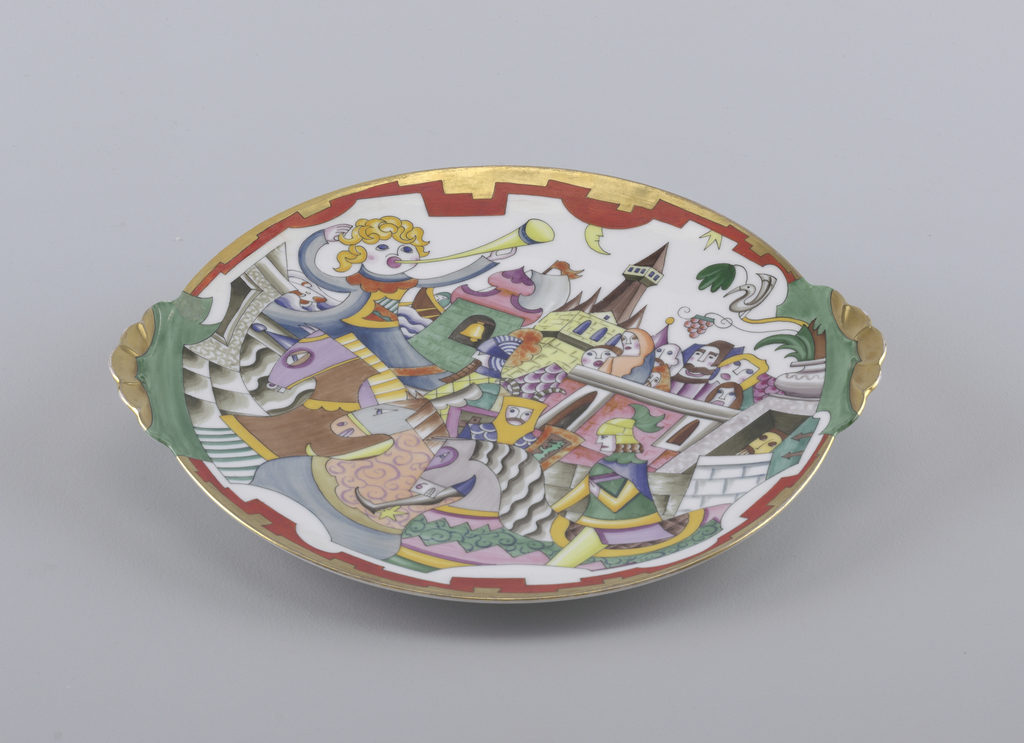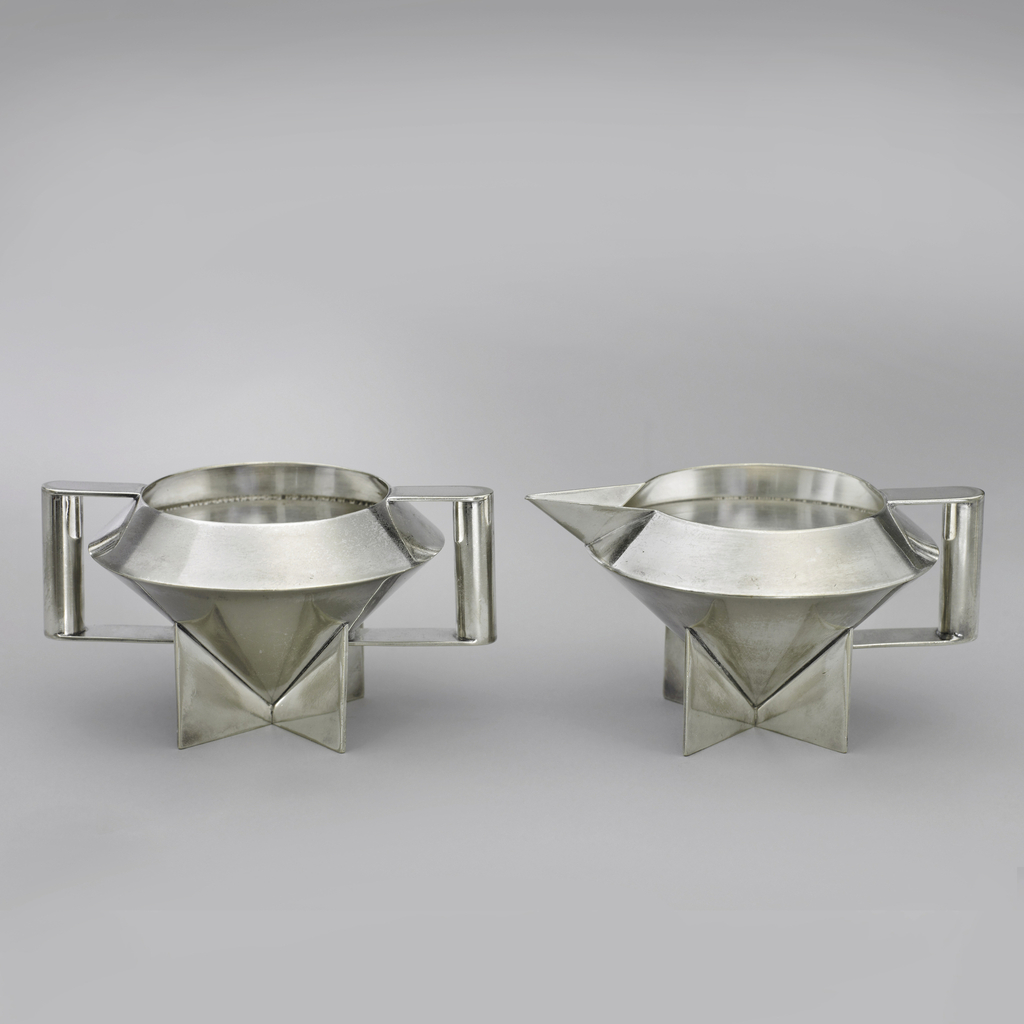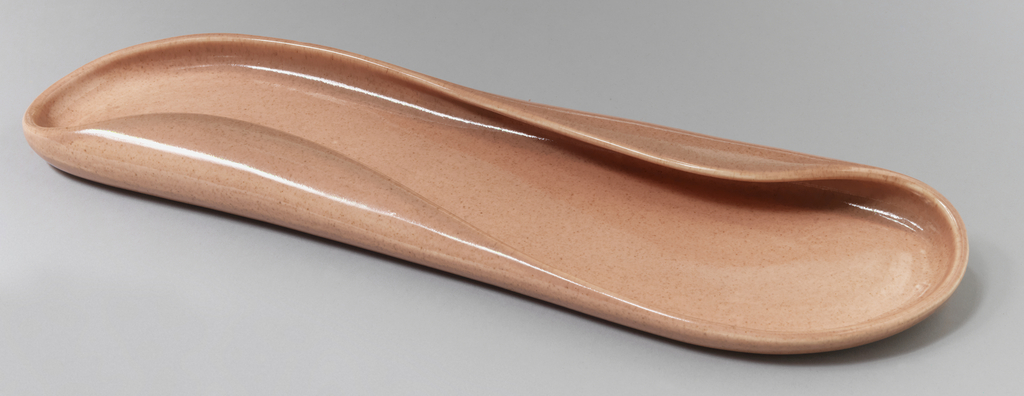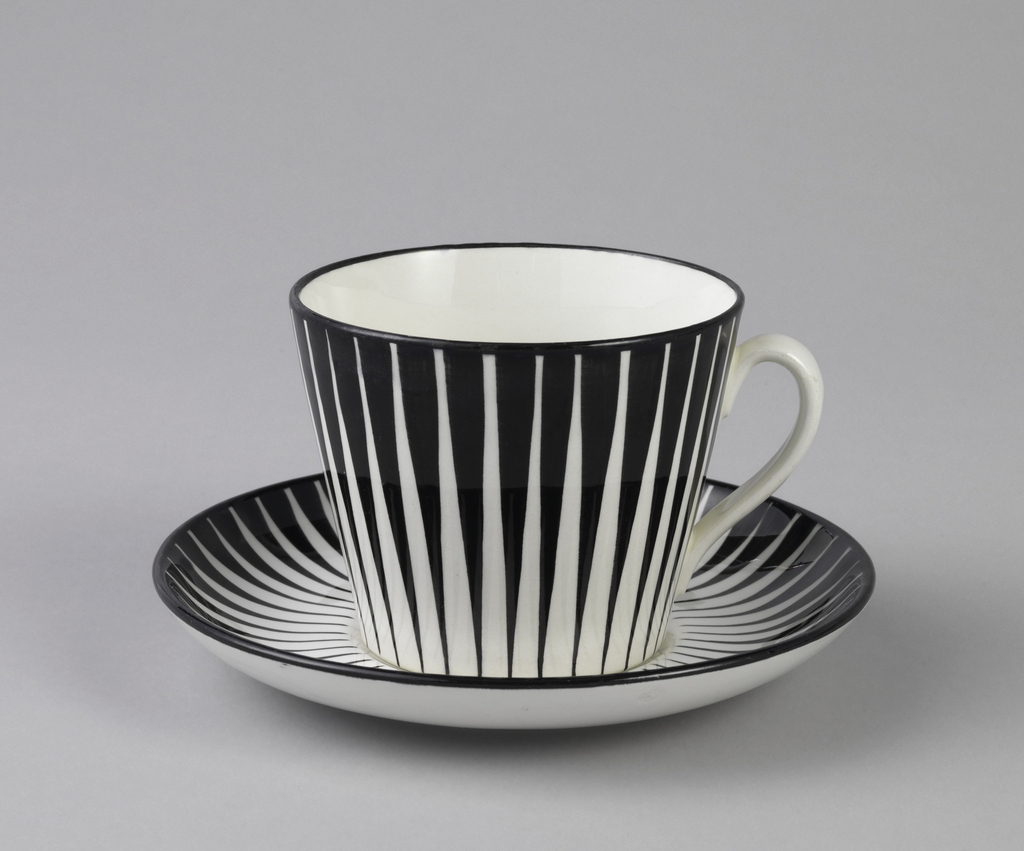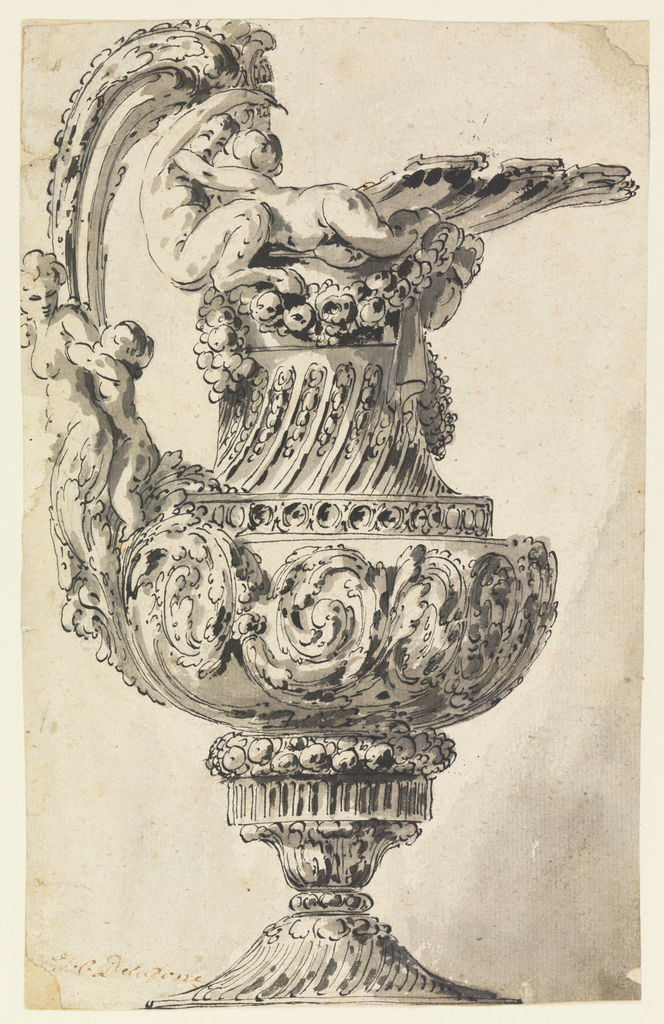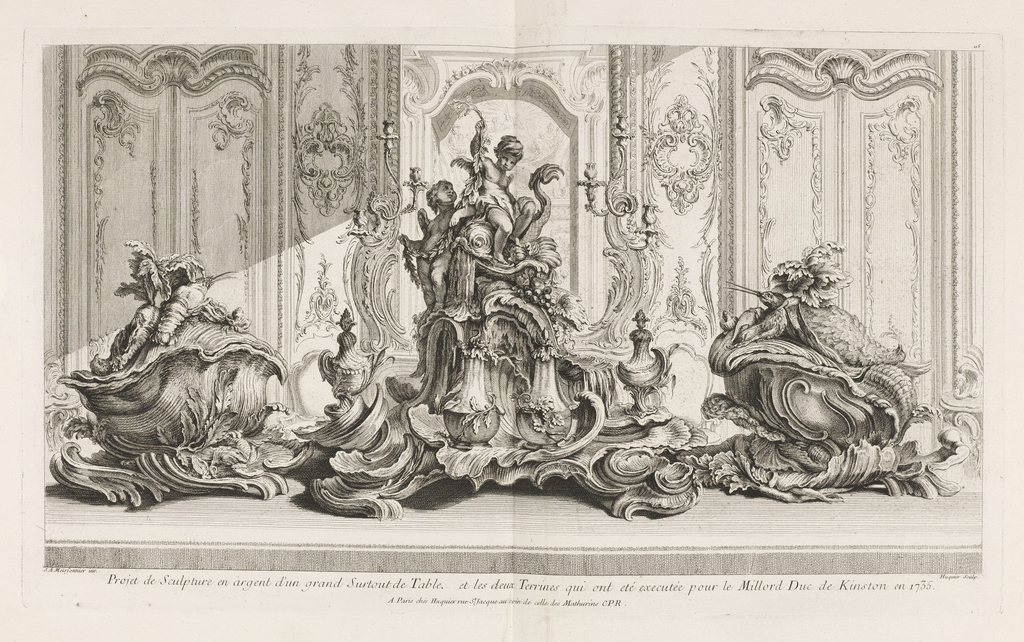This simple plate is part of a large collection of disposable tableware designed by Shinichiro Ogata and produced by Wasara in Japan, with sustainability in mind. Made from a pulp consisting of biodegradable and compostable reed, bamboo and bagasse (a byproduct of sugarcane processing), these delicate looking yet durable wares take myriad forms, which allow...
This design for a vegetable dish, now on view in The Jazz Age: American Style in the 1920s, blends classical forms with modern decorative details.
Now on view in The Jazz Age: American Style in the 1920s, this mocha pot by Ladislav Sutnar effortlessly combines functionality with modern design.
In a December 2016 visit to Cooper Hewitt, George R.Kravis II converted the Promised Gift of this teapot to a gift, joining a large group of objects that helps tell the story of twentieth and twenty-first century design, much of which represents the best of design often for everyday use. It is the first piece...
The No. 2402 bowl, shown here in what the Fostoria Glass Company called “ebony,” is one of eight pieces of glass tableware designed by George Sakier in the museum’s collection. The bowl was made in 1930, just a year after Fostoria hired Sakier to be their main design consultant. The avant-garde look of this bowl...
Eva Zeisel’s Town and Country line for Minnesota’s Red Wing Potteries, Inc. is an icon of the twentieth-century table. Available in several colors, Town and Country reveals many things—from Zeisel’s unique biomorphic forms, to the emergence of informal dining during the 1940s, to foreshadowing the “atomic” look of tableware in the 1950s. These salt and...
2003 National Design Award winner Lella Vignelli passed away December 21, 2016. In honor of her memory, we are sharing an Object of the Day blog post from earlier this year dedicated to her design philosophy. Lella Vignelli has spent a lifetime as a designer examining the ongoing expressions of pure, modern form. Working in...
Throughout the 19th century, Egypt was considered to be nominally a province of the Ottoman Empire, although both France and Britain worked to assert influence and control in the country. Isma’il Pasha was a young man when succeeded his uncle as Khedive (Viceroy) of Egypt in 1863. Isma’il presided over the country as it was...
It is no coincidence that many of Lurelle Van Arsdale Guild’s 1930’s designs for aluminum tableware reflect his honed knowledge of traditional forms and ornament. Before becoming one of America’s top industrial designers of the early to mid-twentieth century, Guild was an antique furniture dealer and throughout his entire life, a collector and connoisseur of...
Covered with Franz von Zülow’s idiosyncratic decoration, this cake serving plate (part of a breakfast set in the Cooper Hewitt’s collection) demonstrates the Viennese artist and designer’s interest in fantasy and fairy tales. Knights on horseback move through a medieval village in the foreground, accompanied by a lively figure blowing a trumpet. The movement of...
Who knew geometry could be so beautiful? This 1928 sugar bowl and creamer set epitomizes American modern design; yet, it is clearly influenced by the modern turn of European design from the same period, as evidenced by the Exposition internationale des Arts décoratifs et industriels modernes in Paris, 1925, as well as by Walter Gropius’...
Russel Wright’s massively popular American Modern Dinnerware line remained in production for 20 years—from 1939 to 1959—but that was only after Wright spent two years prodding reluctant manufacturers to mass-produce his unconventional ceramics. The line was a departure from everything that design, and tableware in particular, represented in prior years. Instead of restrained and formal,...
In calculated contrast, sharp black wedges streak mathematically across a white ground. The black and white stripes that line Eugen Trost’s Zebra cup and saucer accentuate its tapered, circular form just as cleanly as they denote the wild zebra, from which it takes its name. These stripes, however, are hand painted. The Gefle Porcelinsfabrik in...
This is a design for an ewer by the Parisian architect, designer, decorator and print maker, Jean-Charles Delafosse (1734-91). Delafosse engaged in diverse artistic productions producing urban planning proposals, architectural plans, furniture designs as well as drawings of ruin capriccios and allegorical and ornamental prints. His designs were widely circulated across France, England, and Germany...
Eighteenth-century meal services were elaborate affairs, as exemplified in this print showing tureens and a table center piece designed by Juste-Aurèle Meissonnier for Evelyn Pierrepont, Duke of Kingston-upon-Hull in the 1730s. Meissonnier worked for Louis XV, becoming orfèvre du roi (goldsmith to the king) in 1724. This engraving is plate 115 in folio 72 of...
